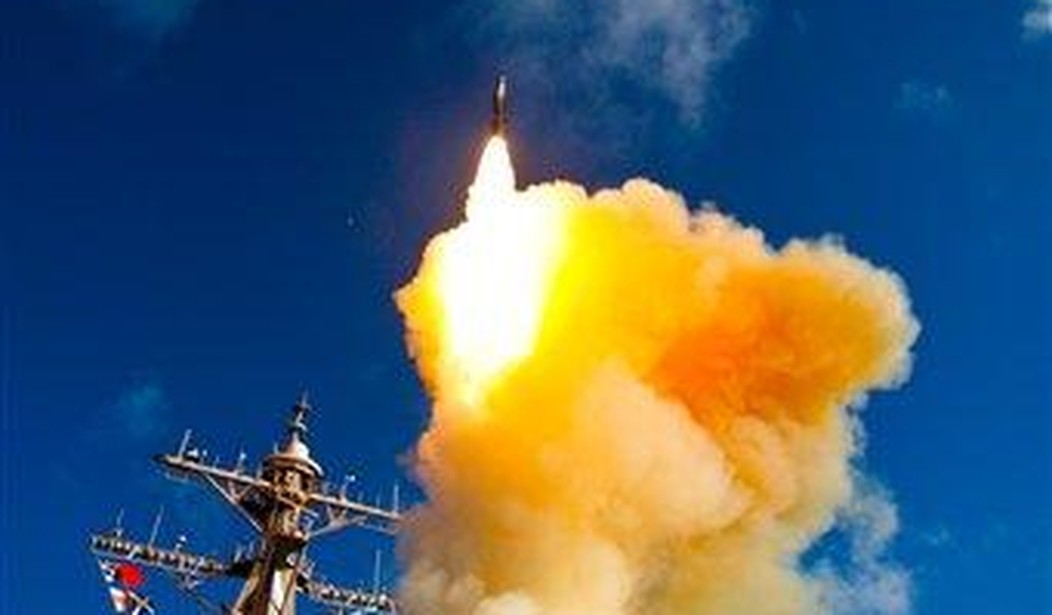The Missile Defense Agency announced that a U.S. Navy destroyer shot down a dummy ICBM in the Pacific Ocean with an SM-3 Block IIA missile. Previously, only ground-based interceptors had accomplished the feat.
Last month, North Korea unveiled a new ICBM that many Western experts believe could hit the East Coast of the United States. The range of previous North Korean missiles limited them to be able to target roughly half the U.S.
The successful test also has significance for the defense of the Hawaiian Islands.
Just before 1 a.m. Eastern Time, MDA oversaw a test where a missile was fired from Ronald Reagan Ballistic Missile Defense Test Site on Kwajalein Atoll toward the open ocean northeast of Hawaii. The Arleigh Burke-class destroyer John Finn, equipped with Aegis Baseline 9, received a track from an external sensor through the Command and Control Battle Management Communications network.
The ship then fired on and destroyed the target with the SM-3IIA, the release said.
In a statement, the head of the MDA said it was a big accomplishment for the agency and showed how a potential defense of Hawaii scheme could work in conjunction with ground-based interceptors now based in Alaska.
People aren’t laughing at Ronald Reagan’s dream anymore. It’s not “Star Wars” fantasizing to imagine being able to destroy incoming ICBMs. In fact, we’re getting pretty darn good at it.
“This was an incredible accomplishment and critical milestone for the Aegis BMD SM-3 Block IIA program,” said Vice Adm. Jon Hill. “The Department is investigating the possibility of augmenting the Ground-based Midcourse Defense system by fielding additional sensors and weapon systems to hedge against unexpected developments in the missile threat.
“We have demonstrated that an Aegis BMD-equipped vessel equipped with the SM-3 Block IIA missile can defeat an ICBM-class target, which is a step in the process of determining its feasibility as part of an architecture for layered defense of the homeland.”
What Reagan had in mind 40 years ago is pretty much becoming a reality. A “layered” strategic defense strategy that would ensure protection from a rogue launch or a smaller country attacking the U.S. It’s a system designed to intercept a missile at several different points, thus virtually assuring its destruction.
“This milestone for homeland defense also represents the continuing success of evolving Aegis to today’s increasingly complex air and missile defense challenges,” Karako said. “Standard [Missiles] are not going to replace missiles of significantly larger diameters anytime soon. But by creating flexibility, this capability buys time and creates a bridge toward a future, next generation capability.”
Democrats tried to kill the strategic defense program for decades. There was no doubt some wasted money. “Space-based” lasers and x-ray bombs were never a viable option. But using near earth-orbiting satellites and other space-based sensors to help track and target our interceptors is proving to be very effective.
For all of Vladimir Putin’s braggadocio about his new “wonder weapons,” Russia isn’t even in the same ballpark as the U.S. when it comes to missile defense. And we have Ronald Reagan to thank for it.










Join the conversation as a VIP Member